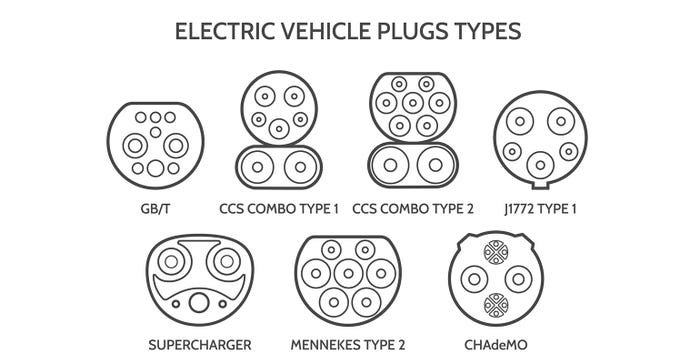New US EV Charging Standards Accelerate EV Interoperability
The White House has announced the creation of new standards to make charging EVs more convenient when driving long distances—no matter what car you drive or which state you charge in.

The Biden-Harris administration has announced new standards to guarantee access to EV charging and accelerate EV interoperability in the US. Until now, there were no comprehensive standards for the installation, operation, or maintenance of EV charging stations. But The Federal Highway Administration (FHWA) just announced the National Electric Vehicle Infrastructure program (NEVI), which includes new standards to build a national EV charging network that is user-friendly, reliable, and accessible.
The NEVI program provides $5B as the first major Federal funding program that focuses on a nationwide development of EV charging infrastructure. The FHWA published a 144-page document that establishes regulations setting minimum standards and requirements for projects funded under the NEVI program and projects for the construction of publicly accessible EV chargers under certain statutory authorities. Those include any EV charging infrastructure project supported with Federal funds that is treated as a project on a Federally aided highway.
Charging ports, connector types, and power levels for EVs
In terms of standards for installation, operation, and maintenance, charging stations are required to contain a minimum number of ports, types of connectors, payment methods, and requirements for customer support services.
The new ruling establishes that any time charging stations are installed there is a required minimum of four ports, notwithstanding the type of port—Direct Current Fast Charger (DCFC) or alternating current (AC) Level 2, or a combination of DCFC and AC Level 2). Additionally, in all instances when a DCFC charging station is installed along, and designed to serve users of, designated Alternate Fuel Corridors (AFCs), there must be at least four network-connected DCFC charging ports.
There is also a requirement that each DCFC port must have Combined Charging System (CCS) Type 1 connectors. This final rule also allows DCFC charging ports to have other non-proprietary connectors so long as each DCFC charging port is capable of charging a CCS-compliant vehicle.

Although many chargers on the market today are not yet using ISO 15118 (Plug & Charge), FHWA sees value in establishing a national standard for compliance and has found ISO 15118 to be the most appropriate standard for this purpose because it is an open standard that is in use both nationally and internationally. Therefore, FHWA has maintained a requirement for full hardware conformance to ISO 15118, including conformance to ISO 15118-3 and hardware capability for implementation of both ISO 15118 Parts 2 and 20.
The FHWA also considered the requests to modify the power level requirements to accommodate emerging technologies and found that technologies such as in-road wireless charging are nascent, so FHWA finds addressing standards in this final rule to be premature. The FHWA will continue to monitor the technological advancements in inductive and catenary charging for consideration as to whether further regulation is needed to provide applicable minimum standards and requirements at a future date.
In summary, the FHWA’s new standards will ensure that:
Charging is a predictable and reliable experience, by ensuring that there are consistent plug types, power levels, and a minimum number of chargers capable of supporting drivers’ fast charging needs.
Chargers are working when drivers need them to, by requiring a 97 percent uptime reliability requirement.
Drivers can easily find a charger when they need to, by providing publicly accessible data on locations, price, availability, and accessibility through mapping applications.
Drivers do not have to use multiple apps and accounts to charge, by requiring that a single method of identification works across all chargers.
Chargers will support drivers’ needs well into the future, by requiring compatibility with forward-looking capabilities like Plug and Charge.
Chargers are interoperable, by establishing a seamless national network of EV charging infrastructure that can communicate and operate on the same software platforms from one State to another.
Having standards and requirements will accelerate the adoption of EVs and benefit all players interesting on participating in expanding the national EV charging infrastructure.
About the Author(s)
You May Also Like





